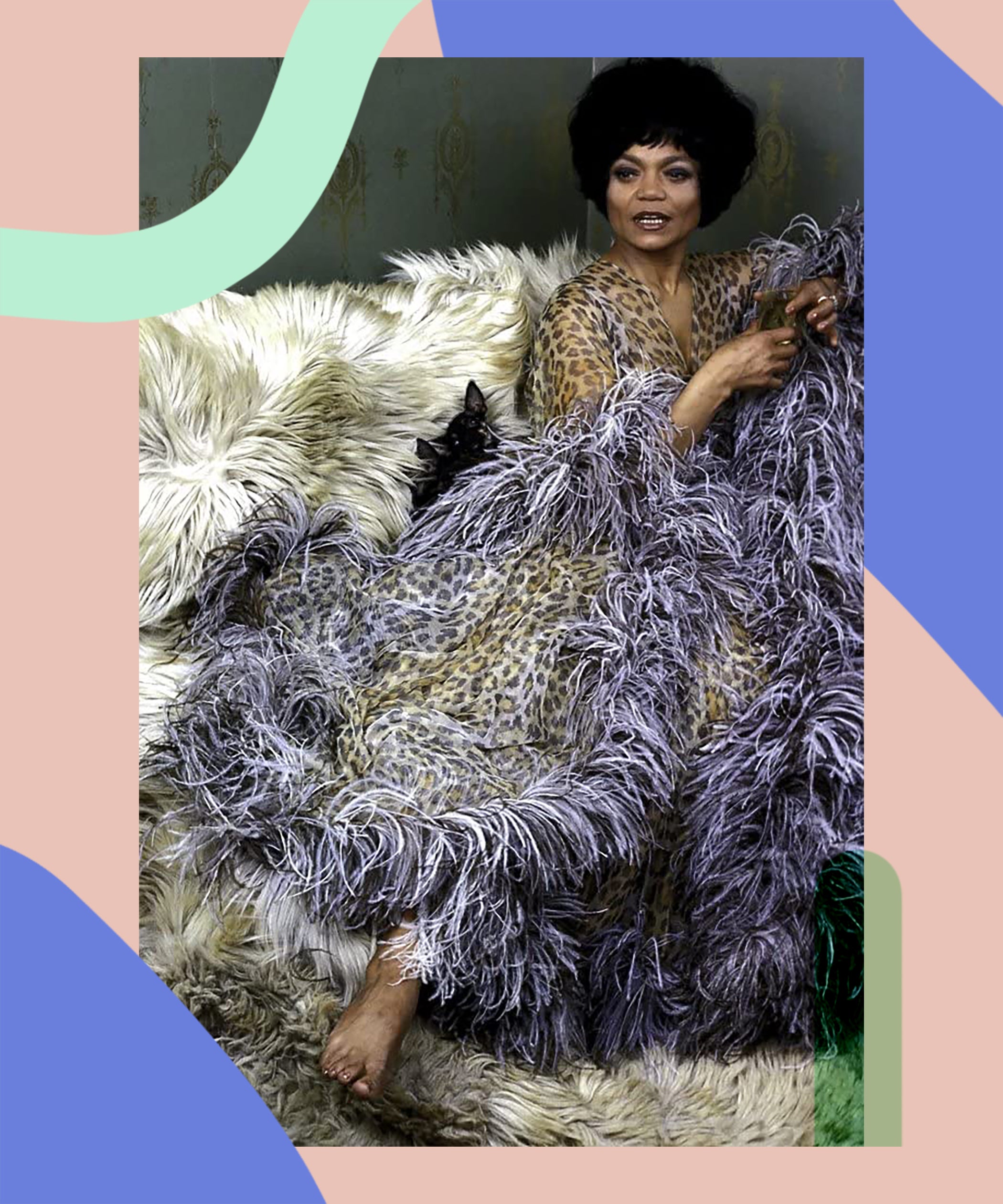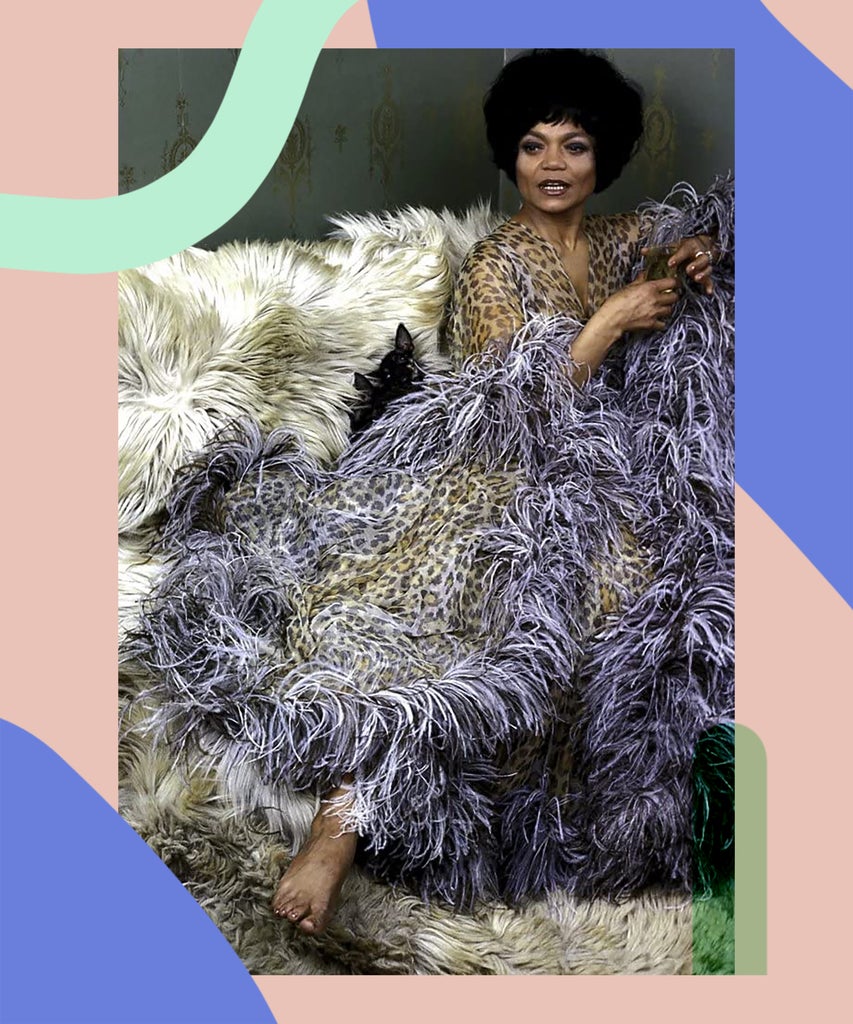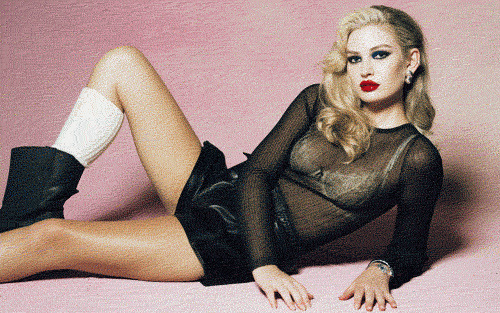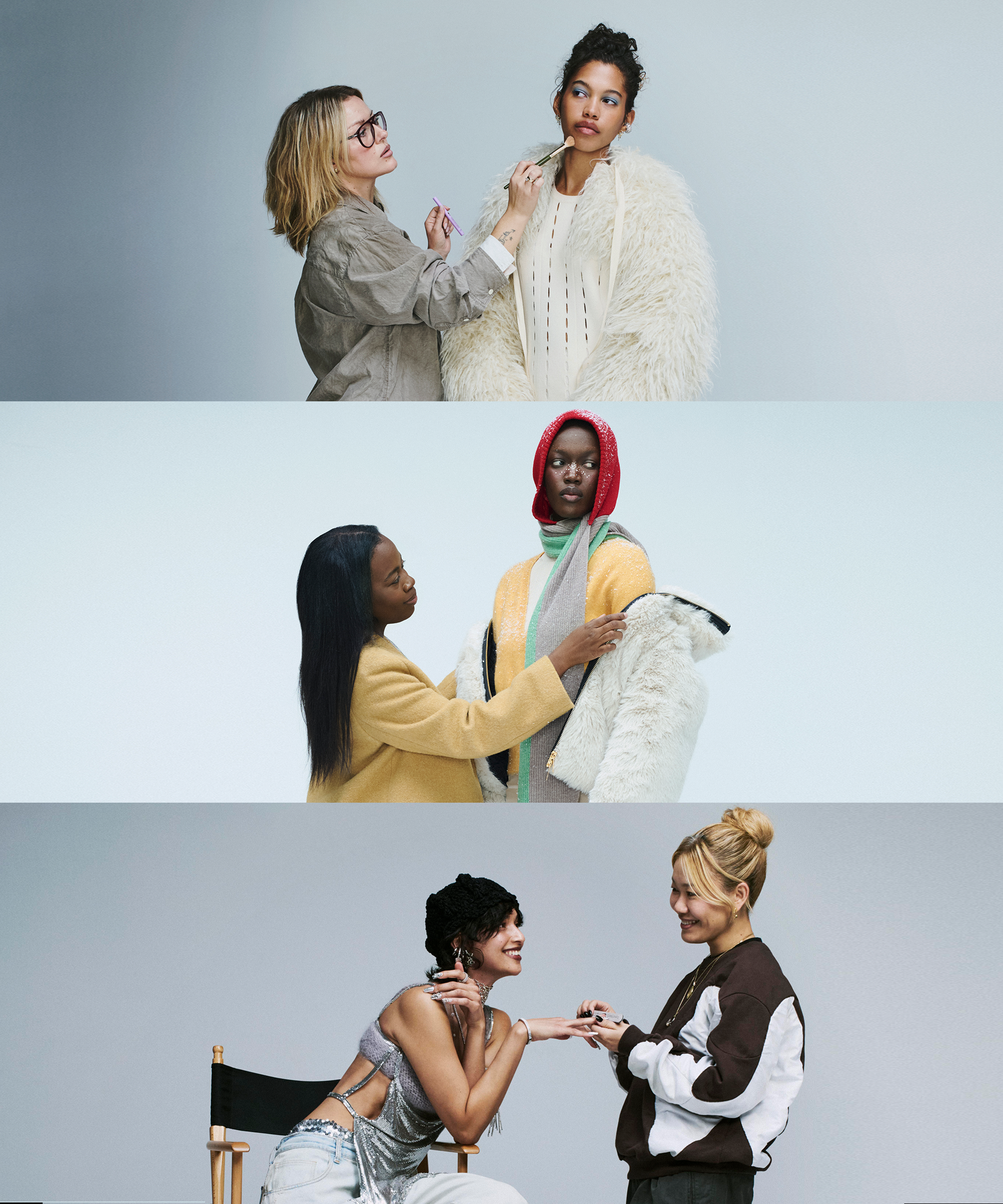

At the beginning of Angela Carter’s final novel Wise Children (1991), twins Dora and Nora Chance are getting ready to celebrate their 75th birthday. The showbiz duo have lived out a raucous three quarters of a century, tripping from the dusty curtains of British pantomimes to artificial forests built in Hollywood studios, and back again. Steeped in many decades’ worth of stage costumes and party frocks, they maintain an ongoing devotion to all things theatrical. “We put on our faces on before we come down to breakfast,” Dora remarks, “the Max Factor Pan-Stik, the false eyelashes with three coats of mascara, everything… Our fingernails match our toenails match our lipstick match our rouge. Revlon, Fire and Ice. The habit of applying warpaint outlasts the battle.” It being their birthday, they’re also wearing their “best kimonos… Real silk, mine mauve with a plum-blossom design on the back, Nora’s crimson with a chrysanthemum… Underneath, camiknickers with a French lace trim, lilac satin for me, crushed rose crepe for her.” It’s a great image, the two arrayed for a morning at home, highly stylized but slightly tawdry single septuagenarian sisters living alone but for the elderly first wife of their father (as with all the many tangled family connections and tensions in this novel, it’s complicated).
I have been thinking a lot about Dora and Nora this past week. Partly this is down to having more time on my hands to do things like rereading comforting books. Largely though, it’s because these twins – brash, glitzy, ready for battle – are an interesting embodiment of a question playing on my mind. There’s been a glut of articles and tweets about work-from-home outfits; about putting on make-up for remote meetings; whether it’s neoliberal to dress for productivity by changing out of pajamas by 9am; or the buzz of putting on a ballgown to drink a bad martini on the sofa. As millions of people find themselves unable to leave their homes (if they are lucky enough to have them) plunged into physical estrangement from the outside world, I can’t stop asking myself: Who do we dress for when we get up and put on our clothes each day? Is it a decision made for ourselves? Or for the eyes of others — partners, friends, family, colleagues, admiring strangers?
It’s a difficult question to resolve, not least because nobody likes feeling as though they style themselves for the approval of others, even when looking and being looked at is a major feature of human attraction and interaction. The short answer is that it depends; dress has a multitude of functions. Dress is practical: it shields us from the elements, protects our feet from the ground, and provides a place to hold our small trinkets and keys. Dress is also social: We dress how we want others to perceive us. That is why most people have “work clothes” different from our “home clothes” and the infinitely more fun category of “going-out clothes.” Right now all of those categories have been blurred, where our bedrooms have become offices and party venues for those who have sniffed out the time and ID code for a Zoom nightclub.
Dora and Nora don’t engage with any of the practical aspects of dress. They skip straight to the ridiculous heart of it all. In their world dress is simply “dress up,” and is as much a pleasure as it is a truth of their existence. It is also a habit, borne of years on the stage. Those elaborate beauty routines may exist partly for the satisfaction of the finished image staring back in the mirror (and possibly for an imagined audience, always applauding), but also just for the daily, repetitive reassurance of the doing. That’s something I’ve taken a strange solace in recently, even though my own morning routine usually involves little beyond putting on jeans and a jumper and tying up my hair in a ponytail. I like the thought of these old ladies coming down to breakfast dressed to the nines, maintaining a committed devotion to display despite largely only having their genetic identical to admire and be admired by.
As anyone who has ever gotten dressed to go out can attest to, it is way more fun to get ready than to be ready: After all, once you’re away from mirrors, how are you supposed to even appreciate the work that went into the masterpiece staring back at you? In a time where our proximity to reflective surfaces has never been greater (unless you happen to be Louis XIV strolling around the Hall of Mirrors), there’s a powerful argument for taking joy in creating A Look, whatever that look may be.
Take inspiration from some of the many flamboyant figures who have typified excellence in at-home dressing: Liza Minnelli as Sally Bowles in Cabaret drifting through her boarding house in sequins, fingers tipped with sparkly green; Eartha Kitt in a leopard print dressing gown with lavender trim; the writer Quentin Crisp on the sofa, a shock of purple hair, loafers and a silk neck tie; the Marchesa Luisa Casati who walked leopards on leashes (though admittedly, that was out of the house, and more an activity than an outfit); Jean Harlow in a peignoir, small puffs of marabou around the sleeves; the artist Leonor Fini wearing bright crushed blue in bed, surrounded by cats; ballet impresario Boris Lermontov in Powell and Pressberger’s film The Red Shoes sitting down to breakfast, eating his melon half-sprinkled with sugar in an embellished turquoise morning robe; and English writer Edith Sitwell, who once described herself as “an unpopular electric eel, set in a pond of goldfish” and wore long medieval gowns, headdresses, and stacks of jewelry. Indulge yourself. You deserve to be impressed.
Like what you see? How about some more R29 goodness, right here?


At the beginning of Angela Carter’s final novel Wise Children (1991), twins Dora and Nora Chance are getting ready to celebrate their 75th birthday. The showbiz duo have lived out a raucous three quarters of a century, tripping from the dusty curtains of British pantomimes to artificial forests built in Hollywood studios, and back again. Steeped in many decades’ worth of stage costumes and party frocks, they maintain an ongoing devotion to all things theatrical. “We put on our faces on before we come down to breakfast,” Dora remarks, “the Max Factor Pan-Stik, the false eyelashes with three coats of mascara, everything… Our fingernails match our toenails match our lipstick match our rouge. Revlon, Fire and Ice. The habit of applying warpaint outlasts the battle.” It being their birthday, they’re also wearing their “best kimonos… Real silk, mine mauve with a plum-blossom design on the back, Nora’s crimson with a chrysanthemum… Underneath, camiknickers with a French lace trim, lilac satin for me, crushed rose crepe for her.” It’s a great image, the two arrayed for a morning at home, highly stylized but slightly tawdry single septuagenarian sisters living alone but for the elderly first wife of their father (as with all the many tangled family connections and tensions in this novel, it’s complicated).
I have been thinking a lot about Dora and Nora this past week. Partly this is down to having more time on my hands to do things like rereading comforting books. Largely though, it’s because these twins – brash, glitzy, ready for battle – are an interesting embodiment of a question playing on my mind. There’s been a glut of articles and tweets about work-from-home outfits; about putting on make-up for remote meetings; whether it’s neoliberal to dress for productivity by changing out of pajamas by 9am; or the buzz of putting on a ballgown to drink a bad martini on the sofa. As millions of people find themselves unable to leave their homes (if they are lucky enough to have them) plunged into physical estrangement from the outside world, I can’t stop asking myself: Who do we dress for when we get up and put on our clothes each day? Is it a decision made for ourselves? Or for the eyes of others — partners, friends, family, colleagues, admiring strangers?
It’s a difficult question to resolve, not least because nobody likes feeling as though they style themselves for the approval of others, even when looking and being looked at is a major feature of human attraction and interaction. The short answer is that it depends; dress has a multitude of functions. Dress is practical: it shields us from the elements, protects our feet from the ground, and provides a place to hold our small trinkets and keys. Dress is also social: We dress how we want others to perceive us. That is why most people have “work clothes” different from our “home clothes” and the infinitely more fun category of “going-out clothes.” Right now all of those categories have been blurred, where our bedrooms have become offices and party venues for those who have sniffed out the time and ID code for a Zoom nightclub.
Dora and Nora don’t engage with any of the practical aspects of dress. They skip straight to the ridiculous heart of it all. In their world dress is simply “dress up,” and is as much a pleasure as it is a truth of their existence. It is also a habit, borne of years on the stage. Those elaborate beauty routines may exist partly for the satisfaction of the finished image staring back in the mirror (and possibly for an imagined audience, always applauding), but also just for the daily, repetitive reassurance of the doing. That’s something I’ve taken a strange solace in recently, even though my own morning routine usually involves little beyond putting on jeans and a jumper and tying up my hair in a ponytail. I like the thought of these old ladies coming down to breakfast dressed to the nines, maintaining a committed devotion to display despite largely only having their genetic identical to admire and be admired by.
As anyone who has ever gotten dressed to go out can attest to, it is way more fun to get ready than to be ready: After all, once you’re away from mirrors, how are you supposed to even appreciate the work that went into the masterpiece staring back at you? In a time where our proximity to reflective surfaces has never been greater (unless you happen to be Louis XIV strolling around the Hall of Mirrors), there’s a powerful argument for taking joy in creating A Look, whatever that look may be.
Take inspiration from some of the many flamboyant figures who have typified excellence in at-home dressing: Liza Minnelli as Sally Bowles in Cabaret drifting through her boarding house in sequins, fingers tipped with sparkly green; Eartha Kitt in a leopard print dressing gown with lavender trim; the writer Quentin Crisp on the sofa, a shock of purple hair, loafers and a silk neck tie; the Marchesa Luisa Casati who walked leopards on leashes (though admittedly, that was out of the house, and more an activity than an outfit); Jean Harlow in a peignoir, small puffs of marabou around the sleeves; the artist Leonor Fini wearing bright crushed blue in bed, surrounded by cats; ballet impresario Boris Lermontov in Powell and Pressberger’s film The Red Shoes sitting down to breakfast, eating his melon half-sprinkled with sugar in an embellished turquoise morning robe; and English writer Edith Sitwell, who once described herself as “an unpopular electric eel, set in a pond of goldfish” and wore long medieval gowns, headdresses, and stacks of jewelry. Indulge yourself. You deserve to be impressed.
Like what you see? How about some more R29 goodness, right here?




